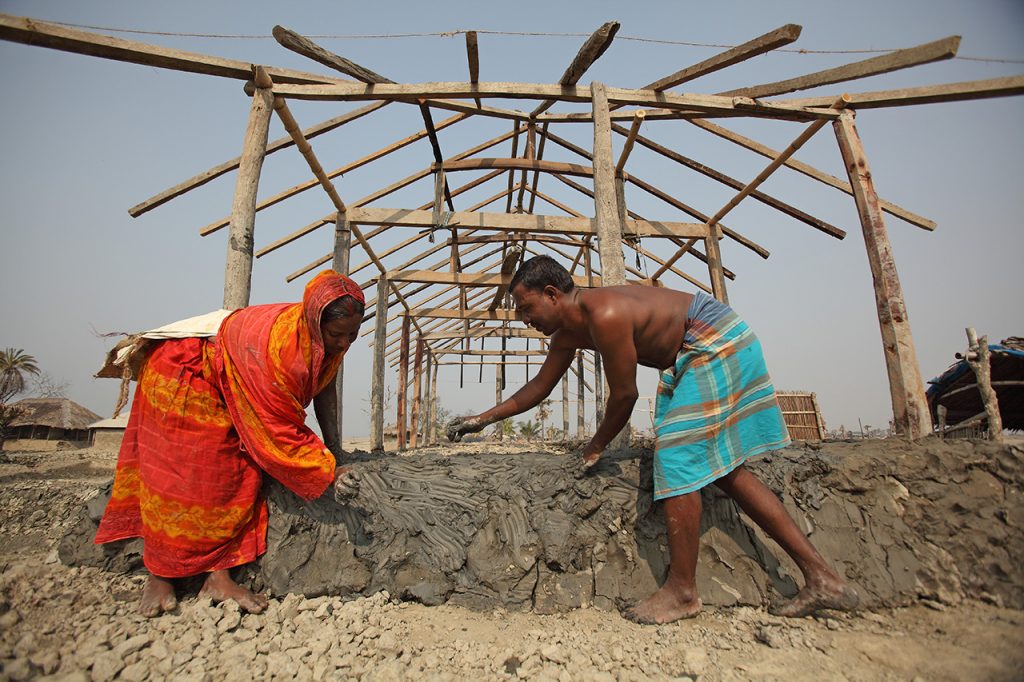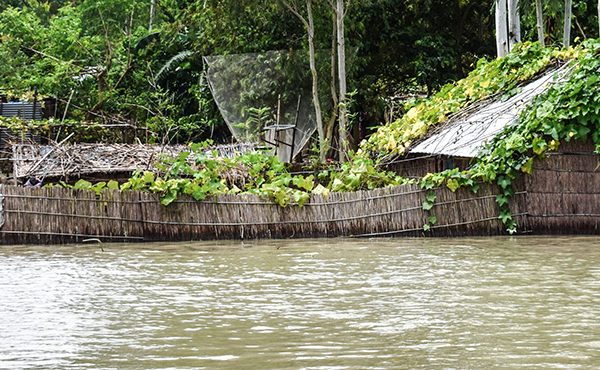From disaster victims to frugal innovators: Learning from communities how to build resiliency
Reading Time: 3 minutes
What are some of the most effective innovations taking place in South Asia, the region most vulnerable to climate change? What do we know about strengthening livelihoods, financial and social protections to increase resilience for the poorest? This post is the fourth in a series of blogs that will share BRAC’s lessons on building and scaling resilience to climate change.
What are some of the most effective innovations taking place in South Asia, the region most vulnerable to climate change? What do we know about strengthening livelihoods, financial and social protections to increase resilience for the poorest? This post is the fourth in a series of blogs that will share BRAC’s lessons on building and scaling resilience to climate change.
The series will run until the Frugal Innovation Forum 2016, which will look at innovations in climate change, disaster management and adaptive livelihood. Organised by BRAC’s social innovation lab, the event draws together leading practitioners from the NGO, corporate and entrepreneurial sectors along with academics and policy makers. In this particular blog, we will look at how the local community in Satkhira, Bangladesh worked with BRAC and UNDP to find frugal innovations to bolster their resiliency.

Extending the base frontiers of houses help provide better support to the structure during storms and cyclones. Photo: BRAC
What does it feel like to be caught in a cyclone?
“The waves were suddenly swirling around us,” said one community member in Bangladesh reflecting on the 2009 Cyclone Aila. “Within 10 minutes, everything was destroyed.”
Cyclone Aila destroyed more than 500,000 houses and compromised the livelihoods of more than five million people. Hundreds of fishery ponds, poultry farms, and livestock were wiped out.
Sidr, Nargis, Aila. Cyclones have been recurring devastating visitors to these areas and have caused tremendous damage to low-lying coastal zones. The most extensive consequences from Aila can be seen in Satkhira district, where even cyclone shelters failed to withstand shocks from the storm.
Of course, when the storm surge passes and the weather is calm, the challenges aren’t over. In the immediate days that follow, meeting basic needs like safe drinking water and finding shelter take the priority. With homes blown over, crops destroyed, livestock killed, many people are thrown into poverty and will take time to recover.
Since Aila, BRAC has worked with communities in Satkhira to develop a more comprehensive strategy for cyclone resilience. Shelters are important, but so are other needs, like water and homes. From a resilience standpoint, in thinking about the ability to cope with disruptive events like cyclones, enabling households to “bounce back better” is the objective, and means addressing more than just physical safety.
Conscious of resource limitations, the interventions were designed to be just “good enough” to address the fundamental issues and as frugal as possible. Given that long-term maintenance would come from the community, everything had to be built to last.
BRAC worked with UNDP and community members in Satkhira to establish disaster-resilient houses and construct a “model village”. These houses were constructed to provide protection against strong winds and water surges that are typically experienced during cyclones. The concept of tile-covered houses elevated on pillars, intended to explore new options for disaster resilient habitats in exposed coastal areas.
The project assumed that the community would take ownership and maintain their houses. But they did more than that: they adapted the basic design into something better. Some families extended the base frontiers of their houses to help provide better support to the structure. Others have concentrated on cultivating and growing varieties of plants and vegetables in their small courtyards. They have also planted different species of mangrove trees around their houses to prevent excessive erosion of land caused by water surges. These simple changes make a big difference.
Livelihood adaption was also prevalent. Due to the increase in saline content in the soil and limitation of dry grassland, many families switched from their typical reliance on cows and goats to raising ducks. This requires less space and the ducks feed themselves mostly from the surrounding ecosystem. Plant and vegetable cultivation in the small courtyards are also profitable opportunities once access to local markets is established. These instances of frugal innovation are a reminder that communities are not merely recipients of aid, but are agents of change as well. Faced with extreme circumstances, some people find ways to do more with less, or build new solutions out of available resources. Over time, these behaviors can formalize in an adaptive mindset, a critical part of resilience.
At this year’s Frugal Innovation Forum, we are exploring the “resilience mindset” that many communities like those in Satkhira exemplify. NGOs need to build their own ability to cope and adapt in frugal and creative ways. Over time, innovation can also become part of an organisation’s culture, like it has at BRAC, facilitating the same kind of constant tweaking and evolution that communities practice naturally.
But even we can be surprised. To keep up with the changing needs, we have to keep listening and learning.
Read the previous three posts in the series:
Six ways Bangladesh is fighting climate change
No lines, no relief camp: 4 lessons on using mobile money for post-flood relief
Finance for flood-hit families: Reducing risk and raising resilience
You can follow all of the discussions at the Frugal Innovation Forum on Twitter (@BRACworld / #FIFresilience).
Riffat Ashrafee is an assistant manager for the BRAC Social Innovation Lab.





